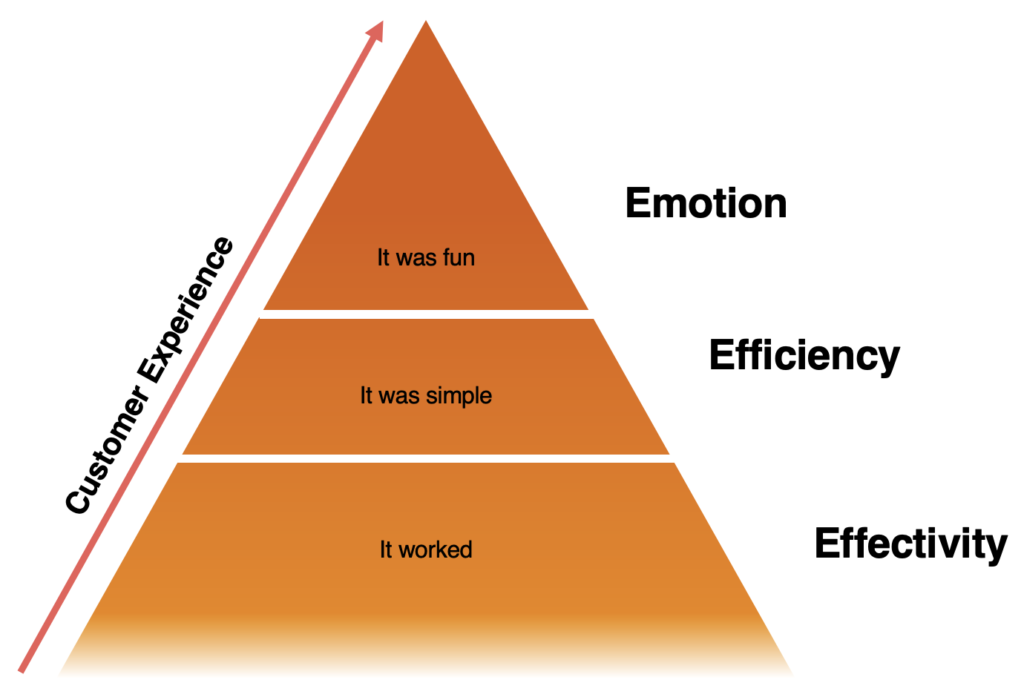In the course of the last year or three, I have written a few times about the supply chain and how it affects the customer experience, sometimes badly so. In my last article ‘the impact of the supply chain on the customer experience’, I explained some of the issues and laid out a couple of high level solutions.
Let me elaborate a little on what I wrote then. Of course, there are challenges in two main areas:
- The demand side
- The supply side
The customer expectations are quite simple: A customer expects that things just work, that the vendor, and information given by the vendor, is reliable, accurate and comes timely; that deliveries after order are coming reasonably fast and that there is transparency about the order and delivery status.
This is all quite abstract, so let us fill this with life.
An example to the contrary goes as follows: You buy something, e.g., some whiteware, from a brand with a very high reputation; you are asked for upfront payment (several thousand dollar, remember, high reputation), get an approximate delivery date two months out – along with a warning that there may be a delay of a month or so.
So far, so good. I could live with that although even the two months should be explained …
Now, imagine that one month into the wait time you get an e-mail notifying you about a changed delivery date, pushing it out by a month. Well, not nice, but also not out of the range of expectations. After all you got told so.
However, the next month you get a similar mail. And the next month, and then in some more months.
This is where the customer experience falls apart. What do you do? You call the vendor. Customer service tells you that they do not know when the delivery can happen, and don’t know a reason other than ‘chip shortage’. It is all up there in the clouds (pun not intended).
This is akin to saying: I do not have any insight into my supply chain.
What? How can this happen?
This is quite unhealthy for a business.
Not having insight into the own supply chain can happen generally only under two circumstances
- Data is not shared internally
- The suppliers do not provide any data
The first reason can be mitigated pretty easily. It is a matter of internal collaboration – i.e., processes – and then of setting up a proper data exchange between the relevant systems. That way, all organizations have the data at hand that they need to at least fulfill some functions that lie at the base of the pyramid of customer expectations. Still, the experience is poor, as the customer does not only expect timely and accurate information, but actually a delivery at the agreed upon date and time.

The second challenge is not overcome that easily. As I have written earlier, overcoming it also involves a fundamental strategic change. A change away from optimizing the supply chain using minimizing cost as the sole KPI, moving towards a balance between cost, reliability, and speed, therefore addressing the core customer demands at the base of the pyramid in more situations. As we have re-learned in the past two years, a sole focus on cost makes supply chains inherently unstable.
Why re-learned? Because supply chain disruptions are not a new phenomenon. We have seen supply chain disruptions time and again, albeit usually not on a global scale like now. Reasons for these disruptions can range from traffic jams, strikes, vendor-supplier disputes, outages or accidents, up to natural disasters, pandemics or wars.
A second part of this necessary strategic change also involves more and earlier sharing of information with suppliers, so that they can improve their own planning. The other way round, this is true, too: Suppliers need to be willing to share relevant information about their capacities and/or load situation, too.
The third party of the chain are the transportation agents that offer air, ground or sea transportation.
Of course, this also involves a lot of trust and the assurance that this information is not abused in a power play of any kind, or worse, but used for the sole purpose of serving the end customer better by cooperating.
But just to be clear: Not all corners of the triangle cost, speed, reliability can be improved at the same time. Working this triangle is not a silver bullet but will help reducing the likelihood of not being able to deliver.
So, what data needs to be shared, and how, so that the supply chain can run at its optimum at any given time?
There is data on two levels
- Macro
- Micro
On macro level, demand signals need to be made available to the suppliers, so they can plan production (and their own sales) early. Conversely, available capacity data needs to be available to buyers, so they have a chance to distribute their orders amongst a number of suppliers, as needed. At the same time, transportation capacities need to be secured, too. This is, where the transportation agents come into picture. It doesn’t help, if buyer and supplier get into an agreement and the goods cannot get transported.
Again, this requires a lot of mutual trust that the supply can be produced in time and quality, that payments are made in time, and especially, that the provided data is not or cannot be abused. Alternatively, it requires an infrastructure that enables the participants to trust in the infrastructure instead.
On the micro level, it needs the real-time exchange of detail information that enables a just-in-time supply that allows for detailed scheduling and synchronizing work processes and to possibly prepare for contingencies. This may include IoT data out of the network but also external data like weather, traffic, and lots more.
This can easily become an extremely high volume of data that needs to be processed fast to be useful.
All of this might be a good use case for a system that is based on a blockchain that is provided by an independent party or, even better, by a party that all participants have a stake in (the more the better). The blockchain could be used to secure the promises (demands and available capacities).
On the other hand, there are still significant voices (e.g. Bruce Schneier in his readable post on the dangers of cryptocurrencies and the uselessness of blockchain) that ask where the ultimate benefit of a blockchain is, whether it is a solution in search of a problem or whether it solves existing challenges in just another (not necessarily better) way or even question the promise of blockchain security altogether (e.g. this DARPA analysis).
In any case, every scalable transactional system that allows for efficient and automated negotiation and processing should be capable of delivering these services. After all, the juice lies in the business logic and not in contracts being smart contracts or not.
So, what does it take to address the supply chain problem, given businesses have developed a strategy that focuses on a balance between cost, reliability, and speed?
- A secure (technical) environment that makes it easy for the participants to trust each other or that makes it even possible to replace trust into each other by trust into the environment. This environment must also ensure that the individual participants are not put at a systematic advantage or disadvantage. This requires a strong governance and is in all likelihood implemented by a network of systems that interact based on a standardized protocol.
- An ecosystem with enough participants on demand, supply and logistics sides that allows for both, the efficiency of scale and the possibility to build flexible networks between suppliers and buyers instead of relying on tight chains. As said above, the participants must not be put at a systematic advantage or disadvantage.
- Enough and accurate data that is securely collected, managed, bound by consent and purpose; it is to be only used to fulfill the needed services. This data must be equally accessible and usable by all participants (for this purpose).
- Scalable and transactional and analytical systems that enable the necessary real-time data ingestion and transaction handling. These systems predict demands and/or shortages on macro level and might also help in mitigating micro-level disturbances.
But as said: Trust between all members of the supply chain, from the end customer through the complete value network is key to the customers having a great experience.
Supply chains must evolve into flexible supply networks, based on mutual trust.

